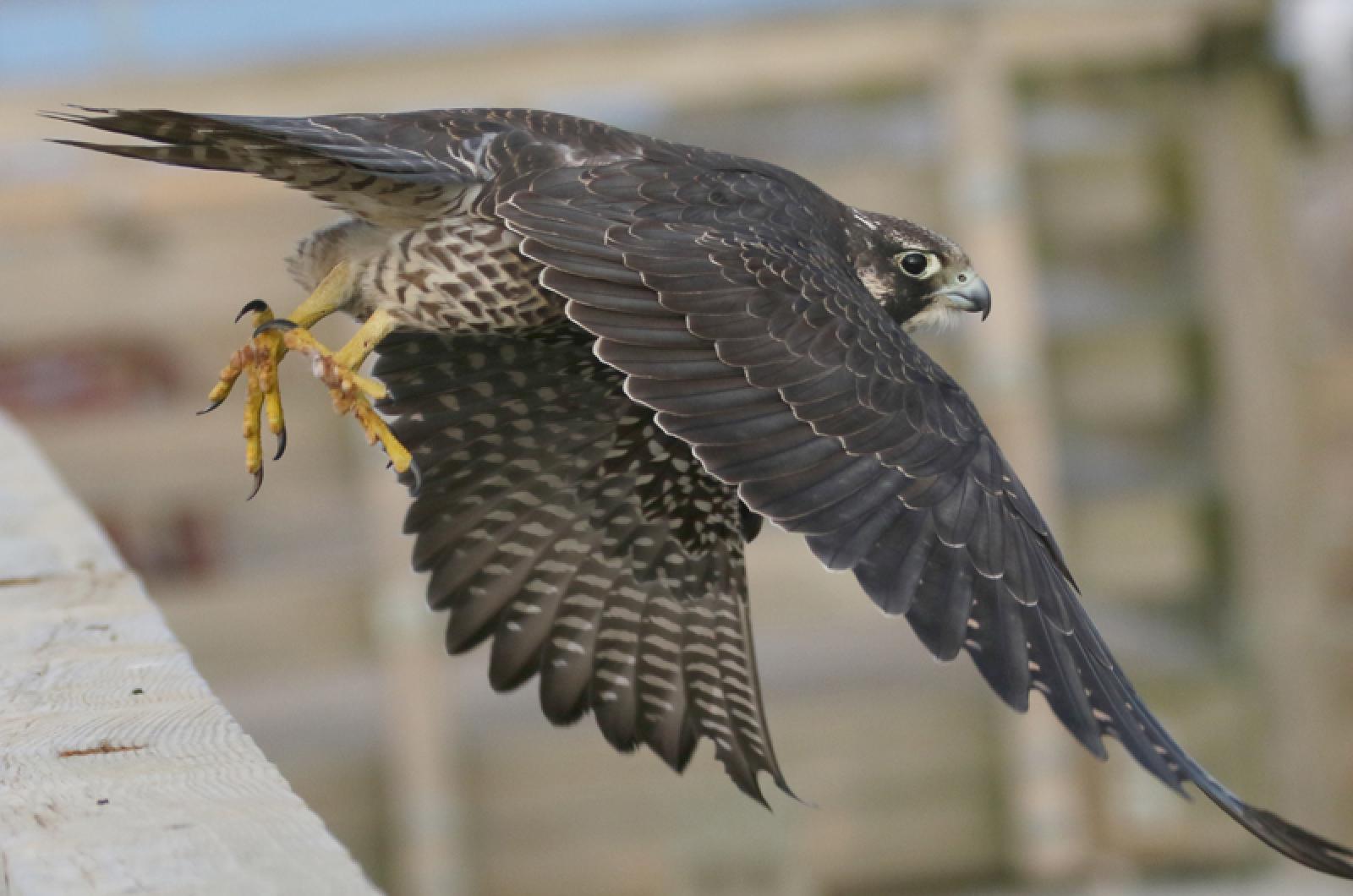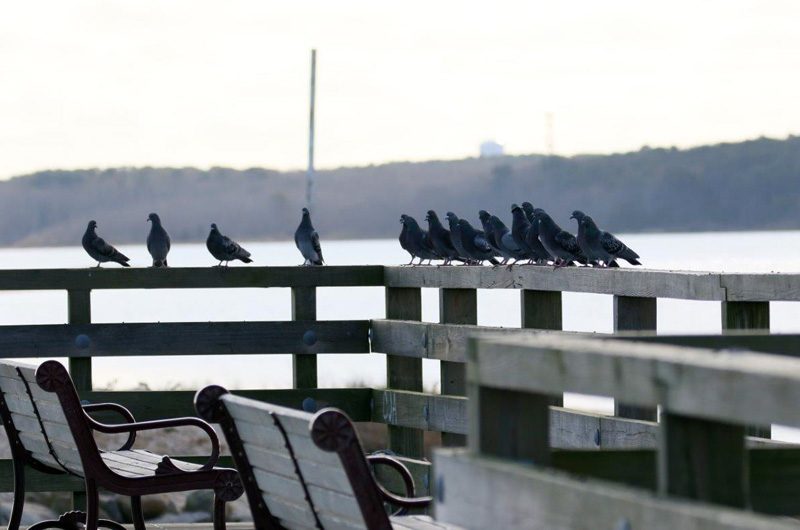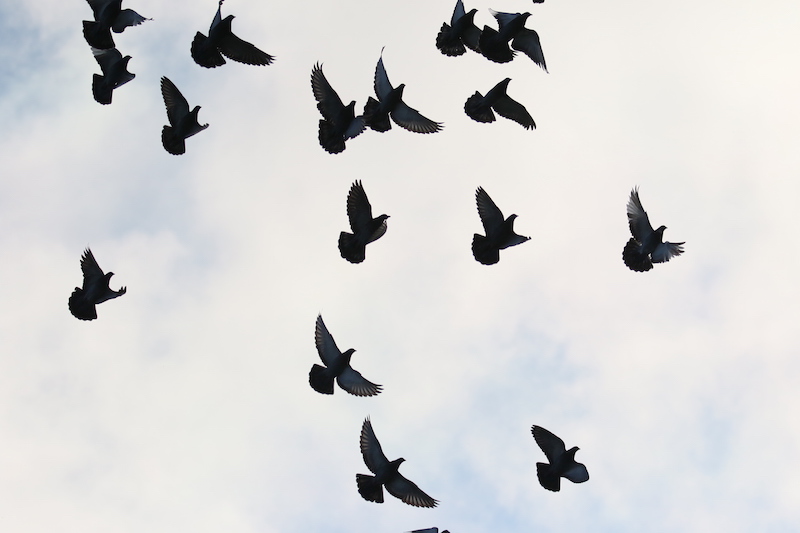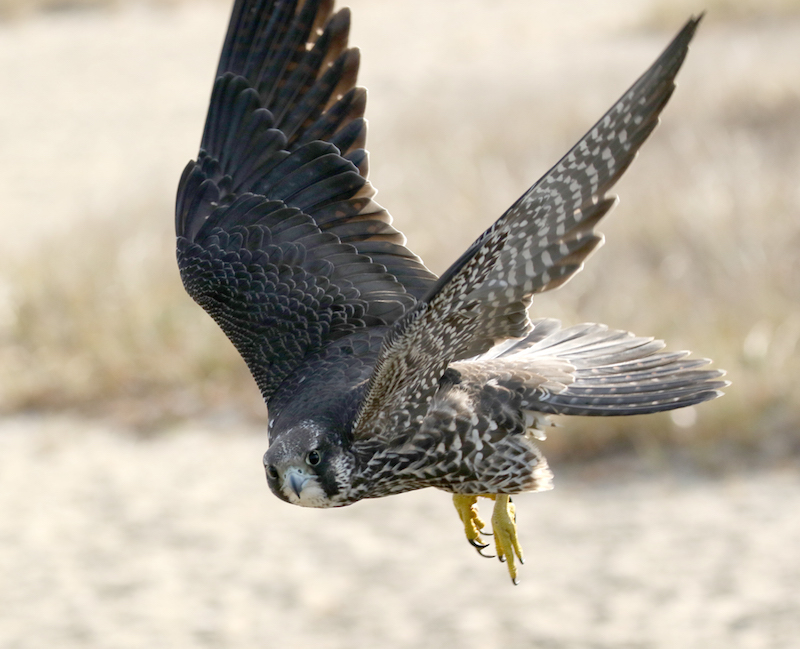The big splash in the Island birding community in recent days is the appearance in at least four locations of snowy owls. They may be passing through or, quite possibly, the Vineyard is their destination for the winter months.
An exciting byproduct of numerous birders scanning the dunes for these bright white owls is the discovery of a young peregrine falcon that has found the bounty of pigeons that reside beneath the Big Bridge (or Jaws Bridge) that directs the ocean tide in and out of Sengekontacket Pond.
The beams and struts and pilings that make up the bridge superstructure below the roadway is a favored residence for these pigeons. Large falcons regard doves and pigeons on the wing as someone with a sweet tooth eyes a pastry tray.
Young predators, including young avian raptors, face daunting odds against making it through their first winter in northern latitudes. If they do not have their act together by now, they just may not make it. As winter progresses, they will need more and more fuel to fight the cold and, if luck and skill favor them, the birds they prey on will be having a tough time as well, and the weaker ones will be easier to catch. If a falcon does not learn to improve the narrow odds of being able to catch food, it will not be contributing to the gene pool in the future.
The falcon at the bridge has found a temporary bonanza.
The pigeons roost consistently under the bridge. The young falcon does not have to be somewhere else just yet. It can afford to miss some of its targets some of the time. In this scenario, the target will be back, until all the pigeons decide it is too dangerous.
What the pigeons have going for them is that once they are beneath the bridge, it would appear, the falcon will not follow them into the dark superstructure. Falcons take their prey on the wing, relying on incredible eyesight, powerful wing muscles, speed, agility and accuracy. They are birds of open space.

This young falcon appears to have the right stuff, except he may be a touch too tame, ignoring curious people and the box trucks roaring across the bridge. As long as pigeons and falcon frequent the bridge area, their paths will meet. And as has already been shown, the falcon is going to catch one now and again, dispatch it and have what amounts to a feast.
Judging from an observation on-site, when a single pigeon approaches the bridge, if the peregrine sees it coming it will launch from its customary perch on the bridge railing to intercept the incoming bird. The head-on closing speed of the two birds, raptor and prey, is impressive, and if their meeting point is anywhere near close to the bridge, the falcon will have only one chance to snag the incoming pigeon, or then the encounter is over in favor of the pigeon.
Another scenario, which includes a strategy the peregrine will use for its entire life, is to rise in pursuit of a flock of birds, in this case a group of pigeons, gain altitude so that it can “stoop” into their midst at great speed and grab one right there or, more likely, isolate an individual bird that is then its sole target. The falcon will pursue the individual bird and make repeated dives on it, until the pigeon is caught or it gets away to safety. The margin between success and failure is quite slim.
The series of photos here show a relaxed but observant peregrine falcon that has recently missed its quarry on at least a couple of sorties. It doesn’t seem frustrated or impulsive, but it looks around alertly and often. Even when a flock of pigeons lands on the bridge railing across the road from the falcon, maybe only 80 feet away, it hesitates, seeming to weigh the odds of a chase. And its pursuit after takeoff is not direct.
As the young falcon launches off the bridge railing, the 15 pigeons burst upward as a unit and immediately climb for altitude. The best strategy for some birds against a pursuing falcon is to go straight up as fast as possible. Something about the falcon’s climb rate is deficient and known to the escaping birds, and they also know they cannot possibly outrun the falcon in a lateral race.
Here, as the falcon pursues, the pigeons manage to stay above it. Then, inexplicably, one of the pigeons has become separated from the others, and the raptor heads for it as though nothing else exists. The fate of the pigeon looks hopeless, as the young falcon slashes through the air and swerves in pursuit as the pigeon dashes and turns. When the falcon misjudges a frantic change of direction, suddenly the pigeon is almost halfway back to the bridge in a masterful breakneck dive for refuge. The speeding raptor gains on its quarry as it nears the bridge, but the chase is done. As the pigeon disappears into the dark timbers the pursuer pulls up like a horse reigned in at the edge of a cliff.
The young falcon goes back to a favorite perch on the bridge railing and for a while looks down over the edge, stretching to pick up some glimpse of the bird that was so nearly in its grasp.
There is some irony in the fact that a snowy owl is probably the only avian predator in this open habitat that might threaten a young peregrine. Both species will profit from not being hounded by eager human approaches. There is enough energy expended in just catching their food.
Gazette contributor Lanny McDowell is an avian photographer and artist. His website is here.











Comments (11)
Comments
Comment policy »